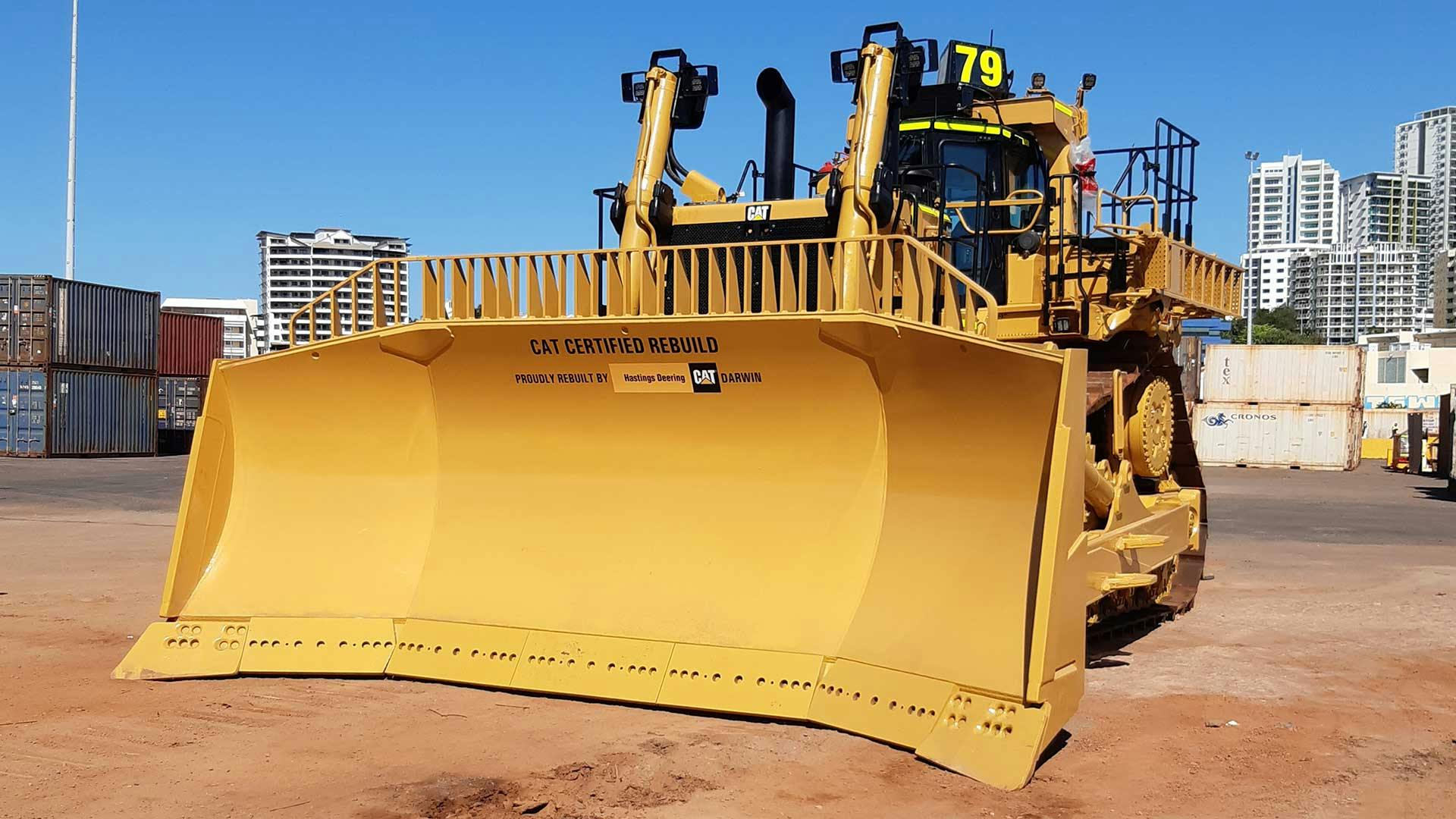Rio Tinto optimises life for Cat D11T with strategic planning
In any operation, the need to remove a key asset for 9 weeks makes a significant impact on delivering on production targets. When that asset is a powerhouse in mining applications, a Cat® D11T dozer, strategic forward planning is critically important.
The Cat D11T Dozer is purpose built to move more material and ensure maximum availability through its planned life cycle. For Rio Tinto, Dozer 79, had built up over 37,000 hours ripping, and pushing bauxite at their open cut mining operation in Gove, Northern Territory.
Rio Tinto knew that it wanted to undergo a Cat Certified Rebuild for its dozer but had to come up with an innovate way to do this while minimizing equipment down time.
Brendan Coleing, Superintendent, Mining Maintenance said that the Gove Operation has focused heavily on building safe and reliable machinery to meet the targeted life of their assets and maintenance schedules.
“With a 24/7 operation, we need to plan and strategically think about our assets, their maintenance and lifecycle.” “By planning large maintenance projects in advance, at Rio Tinto, we’ve been able to compensate for machinery downtime and achieve some great energy efficiencies.”
One of the key projects that helped to allow for the 9-week Cat Certified Rebuild was the D11R repower project.
In early 2020, the Hastings Deering team worked with Rio Tinto on an innovative alternative solution for engine replacement in their D11R fleet that reduced costs, fuel use and emissions while extending lifespans. This incorporated replacing the 3508 engines that the machines originally came out with, with the newer C32 engines.
“Recent success with repowering our D11 fleet with C32 engines, has helped our mining operations move more bauxite due to increased power in the machine,” he states. “This in turn allowed us to remove Dozer 79 out of production, and into the workshop to complete a Cat Certified Rebuild.”
Alongside the increase in machine availability, this project presented a budgeted fuel burn reduction of up to 25%.


